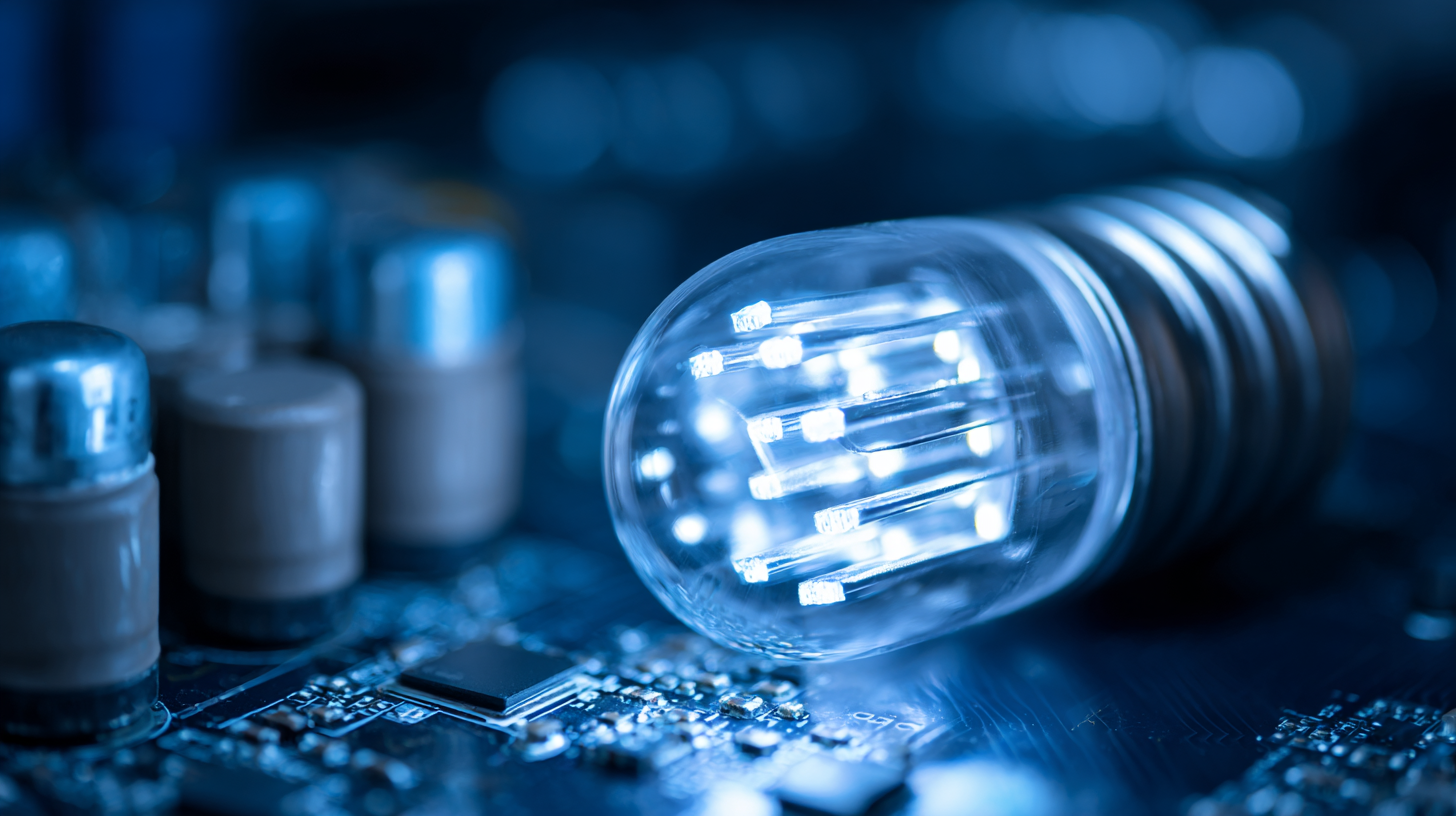How to Maximize Energy Efficiency with LED Technology for Your Business Operations
As businesses continually seek ways to enhance operational efficiency and reduce costs, the adoption of LED technology has emerged as a game-changer in energy management. According to the U.S. Department of Energy, LED lighting can reduce energy consumption by up to 75% compared to traditional incandescent lighting, offering a significant opportunity for organizations to minimize their carbon footprint. Furthermore, the transition to LED solutions can lead to substantial savings on energy bills, with some reports indicating that businesses can recoup their initial investment within just two years. By leveraging LED technology, companies not only enhance their energy efficiency but also improve lighting quality and working conditions, driving productivity and employee satisfaction.

This guide explores strategic methods for maximizing the benefits of LED technology in various business operations, ensuring long-term sustainability and cost-effectiveness.
Understanding LED Technology and Its Benefits for Businesses
LED (Light Emitting Diode) technology has revolutionized the way businesses approach energy efficiency. According to a report by the U.S. Department of Energy, commercial buildings can save up to 80% in energy costs by switching to LED lighting compared to traditional incandescent bulbs. This remarkable efficiency stems from LEDs' ability to convert a higher percentage of energy into visible light, minimizing wasted heat and reducing the load on cooling systems.
Furthermore, the longevity of LED lights greatly contributes to their cost-effectiveness. The same DOE report highlights that LEDs have a lifespan of up to 25,000 hours or more, which is significantly longer than incandescent or fluorescent lighting options. This durability not only reduces maintenance and replacement expenses but also ensures consistent lighting quality over time. Businesses that invest in LED technology can lower energy consumption and maintenance costs while enhancing their overall operational efficiency, promoting sustainability, and making a positive impact on their bottom line.

Assessing Your Current Energy Consumption and Identifying Opportunities
Assessing your current energy consumption is the first step towards maximizing energy efficiency with LED technology in your business operations. Begin by conducting a comprehensive audit of your energy use. This involves tracking your energy bills, identifying peak usage times, and analyzing the performance of existing lighting systems.
Consider using energy monitoring tools that provide real-time data; this can help pinpoint areas where energy is being wasted and allow you to quantify potential savings through the implementation of LED solutions.
Once you've established a clear picture of your energy consumption, you can identify specific opportunities for improvement. Look for high-energy-consuming areas, such as warehouses, offices, and retail spaces, where traditional lighting can be replaced by LEDs. Additionally, explore the potential for smart lighting systems that adjust based on occupancy and natural light levels. By focusing on targeted upgrades and intelligently managing your lighting, you can not only reduce energy costs but also enhance the working environment for employees and create a more sustainable business model.
Implementing LED Solutions: Selection, Installation, and Maintenance
Implementing LED solutions in business operations is a strategic move that can significantly enhance energy efficiency. According to a report from the U.S. Department of Energy, LED lighting can use up to 75% less energy than traditional incandescent lighting while lasting 25 times longer. This substantial reduction in energy consumption not only leads to lower electricity bills but also minimizes maintenance costs associated with frequent bulb replacements, especially in commercial settings where lighting is essential for operations.
When selecting LED products, it is important for businesses to consider factors such as lumens per watt, color temperature, and the intended application of the lighting. A study by the Illuminating Engineering Society highlights the importance of choosing the right lumen output to meet specific operational needs without over-lighting, which can waste energy. Additionally, proper installation is crucial; ensuring fixtures are positioned correctly can optimize lighting performance and further enhance energy savings. Routine maintenance, which may include cleaning fixtures and checking for sensor functionality, also plays a vital role. The same DOE report indicates that businesses that regularly maintain their LED systems see an additional energy efficiency improvement of up to 15%. By focusing on these key areas, businesses can maximize the benefits of LED technology effectively.
Monitoring and Analyzing Energy Performance Post-Implementation
Monitoring and analyzing energy performance after implementing LED technology is crucial for ensuring that your business operations remain energy-efficient and cost-effective. After switching to LED lighting, it is essential to track energy consumption to validate the expected savings and identify any discrepancies. Utilizing smart metering technology allows businesses to gather real-time data on energy usage and understand patterns in their lighting needs. By analyzing this data, companies can pinpoint areas where they are achieving energy efficiency and where they may need to make adjustments.
Additionally, conducting regular audits can help sustain energy performance over time. This involves assessing not just the energy consumption of the LED lights themselves but also considering their impact on overall business operations. Factors such as occupancy patterns, seasonal changes, and maintenance routines should all be factored into the analysis. By integrating this information into a comprehensive energy management strategy, businesses can continuously optimize their LED systems, further driving down energy costs and enhancing operational efficiency. Investing in analytical tools and training staff in energy performance metrics can solidify the long-term benefits of the transition to LED technology.
Promoting Sustainability: Communicating Your Energy Efficiency Success
Communicating your energy efficiency success is crucial for promoting sustainability within your business operations. By effectively showcasing your transition to LED technology and the resulting energy savings, you can enhance your corporate image while inspiring others to follow suit. Sharing transparent data about your energy consumption before and after implementing LED solutions not only highlights the financial benefits but also emphasizes your commitment to environmental responsibility.
**Tips for Promoting Your Energy Efficiency Success:**
1. Utilize social media platforms to share infographics and testimonials illustrating your journey towards increased energy efficiency. Visual storytelling can engage your audience and create a stronger connection to your sustainability initiatives.
2. Consider hosting workshops or webinars to educate other businesses and community members about the advantages of LED technology. This not only positions your company as an industry leader but also fosters a collaborative environment focused on sustainability.
3. Develop case studies that detail specific projects or implementations of LED technology. Providing concrete examples of energy savings and reduced carbon footprints can serve as powerful motivators for others to adopt similar practices.

Related Posts
-

Benefits of Using LED Fixtures for Enhanced Energy Efficiency
-

7 Best Street Lights to Illuminate Your Path in 2024
-

Maximizing Your Outdoor Appeal with Landscape Lights Advantages and Industry Insights
-

Unlocking the Advantages of Choosing LED Solar Lights for Your Business Needs
-

How to Choose the Best LED Spotlights for Your Home Lighting Needs
-

Top Strategies for Maximizing Efficiency with LED Spotlights in Your Procurement Process
